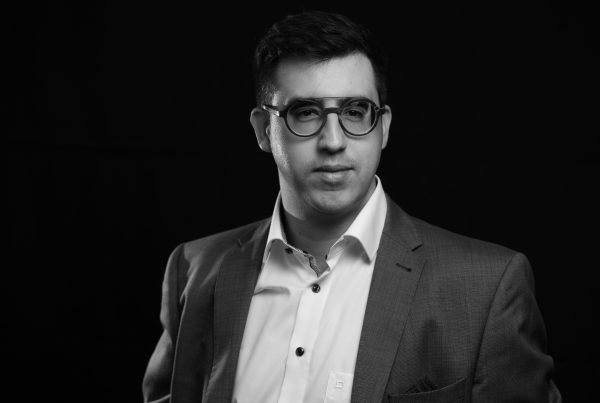César was born in Salto, Uruguay. After studying Chemical Engineering (2001—2006) in the Universidad de la República, Uruguay, he was awarded a research UNESCO-IUPAC internship (2006-2007) in the Institute of Macromolecular Chemistry in Prague where he got hooked in the topic of polymers and biointerfaces. There he pursued his PhD (2007—2012) working on optical biosensors and antifouling surfaces under the mentorship of Eduard Brynda and Aldo Bologna. Following a postdoctoral work (A. von Humboldt postdoctoral fellowship, 2012-2013), and research stays in Melville Laboratory in Cambridge (2009), Univ. of Pennsylvania (2013, 2015), and Pasteur Institute in Lille (2015), César returned to Prague to start his independent group. In January 2016, his group joined DWI-Leibniz Institute for Interactive Materials in Aachen and expanded the research to adaptive interfaces and synthetic cells. Currently, he is an ICREA Research Professor at the Institute of Bioengineering of Catalonia.
Research interests
We want to uncover design rules to develop materials capable of communicating with living matter and directing its behavior in a self-regulated manner to enable new biomaterials, therapeutics, and medical devices. Research lines: (1) Molecular Engineering. We imitate nature blueprints to synthetize macromolecules that like “Lego” pieces assemble into structures with totally new functions. (2) Stealth and adaptive biointerfaces. We are developing adaptive coatings that interact and direct the biological surrounding in a self-regulated manner and their translation to medical and diagnostic applications. This includes hemocompatible surfaces, wound dressings, etc. (3) Cell membrane mimics and protocellular systems. We working on “quasi-living” synthetic cells by assembling non-living modules into micro-compartments displaying similar functionality and adaptivity as found in natural cells and beyond. An example are synthetic macrophages to fight antibiotic-resistant pathogens
Selected publications
– Joseph A, Wagner AM, Garay-Sarmiento M, Aleksanyan M, Haraszti T, Soeder D, Georgiev VN, Dimova R, Percec V, Rodriguez-Emmenegger C 2022, ‘Zwitterionic Dendrimersomes: A Closer Xenobiotic Mimic of Cell Membranes’, Advanced Materials, 34, 49, 2206288.
– Wagner AM, Eto H, Joseph A, Kohyama S, Haraszti T, Zamora RA, Vorobii M, Giannotti MI, Schwille P & Rodriguez-Emmenegger C 2022, ‘Dendrimersome Synthetic Cells Harbor Cell Division Machinery of Bacteria’, Advanced Materials, 34, 28, 2202364.
– Wagner A M, Quandt J, Söder D, Garay-Sarmiento M, Joseph A, Petrovskii V S, Witzdam L, Hammoor T, Steitz P, Haraszti T, Potemkin I I, Kostina N Y, Herrmann A & Rodriguez-Emmenegger C 2022, ‘Ionic Combisomes: A New Class of Biomimetic Vesicles to Fuse with Life‘, Advanced Science, vol. 9, pp 2200617.
– Quandt J, Garay-Sarmiento M, Witzdam L, Englert J, Rutsch Y, Stoecker C, Obstals F, Grottke O & Rodriguez-Emmenegger C 2022, ‘Interactive Hemocompatible Nanocoating to Prevent Surface-Induced Coagulation in Medical Devices’, Advanced Materials Interfaces, , 2201055.
– Pala M, El Khannaji H, Garay-Sarmiento M, Ronda JC, Cadiz V, Galia M, Percec V, Rodriguez-Emmenegger C & Lligadas G 2022, ‘A green solvent-to-polymer upgrading approach to water-soluble LCST poly(N-substituted lactamide acrylate)s’, Green Chemistry, 24, 8314-8323.
– Riedelova Z, de los Santos Pereira A, Svoboda J, Pop-Georgievski O, Majek P, Pecankova K, Dycka F, Rodriguez-Emmenegger C & Riedel T 2022, ‘The Relation Between Protein Adsorption and Hemocompatibility of Antifouling Polymer Brushes’, Macromolecular Bioscience, 2200247.
Selected research activities
In 2022 I supervised 7 PhD students, published 14 papers and obtained 2 research grants accounting for 477000 euros. The Senior Researcher of the group, Nina Kostina, was awarded a Ramon y Cajal fellowship.
